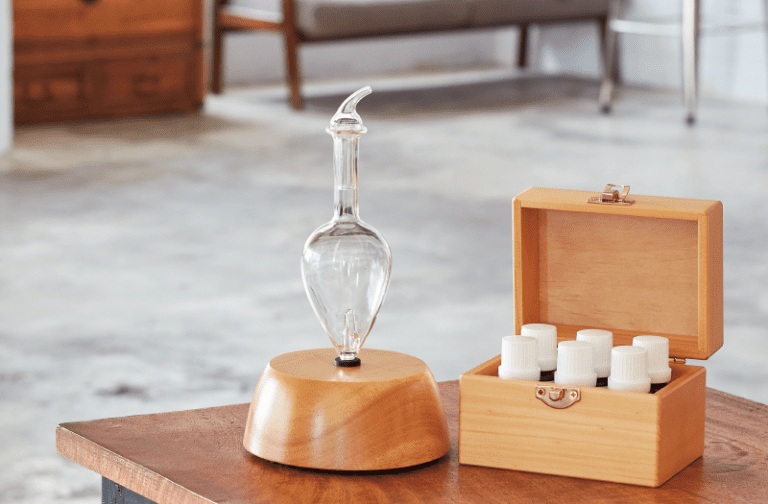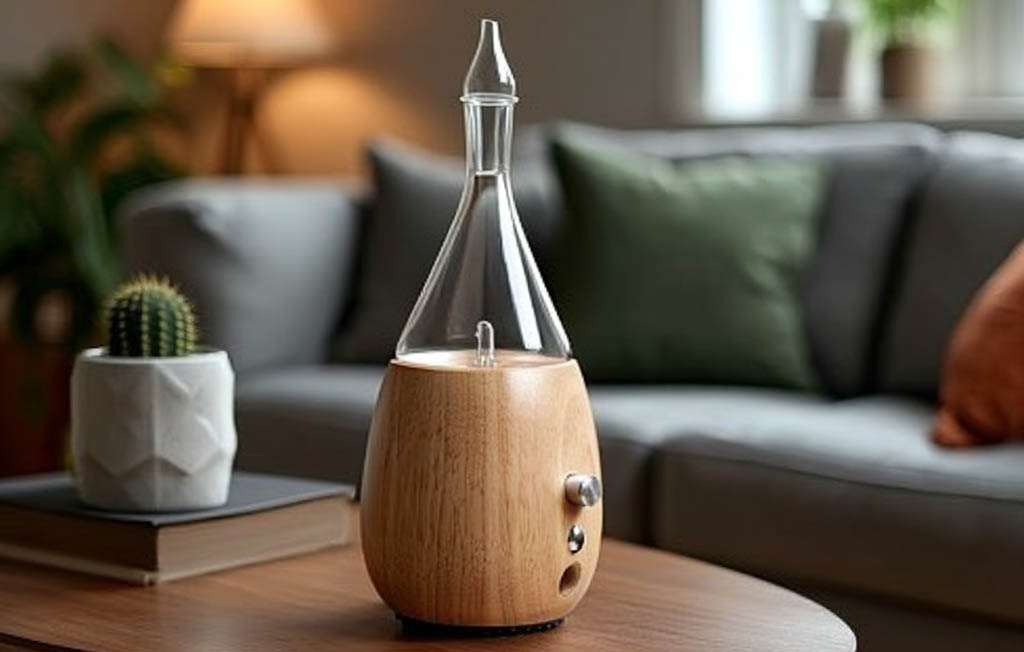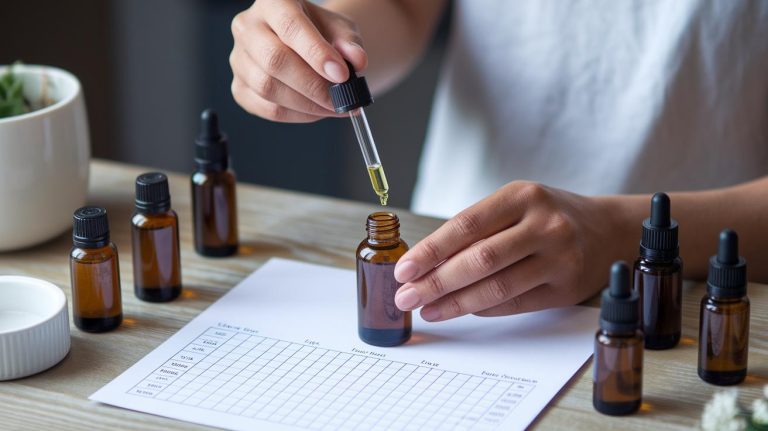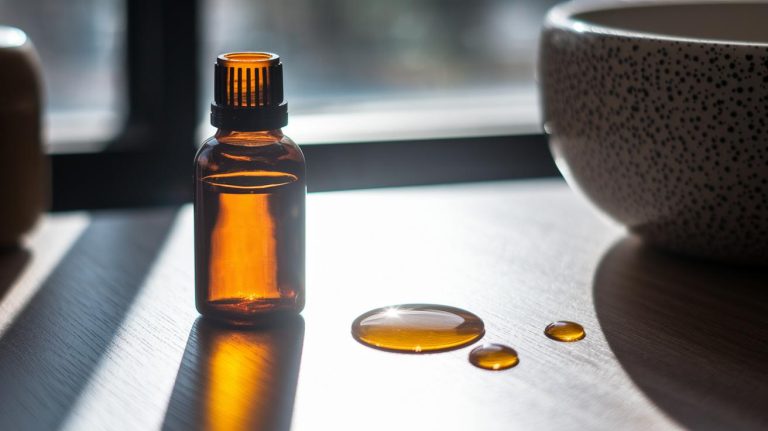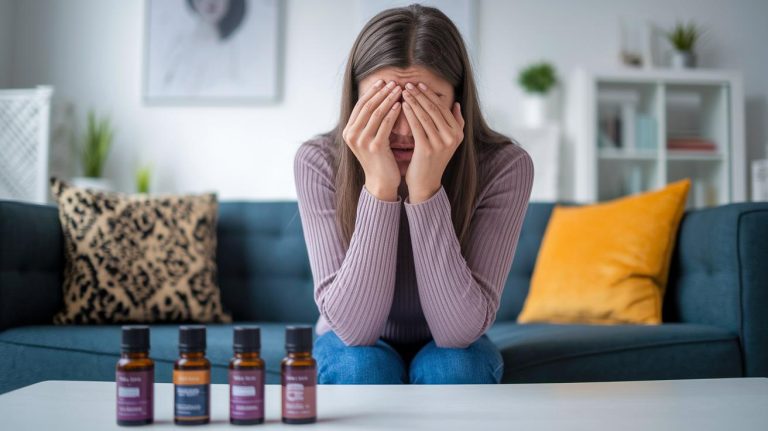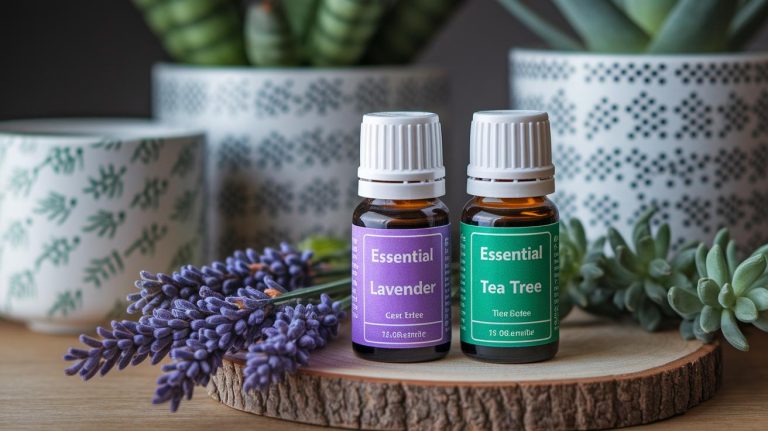5 Essential Oil Diffuser Safety Brings Home Tranquility
Is Your Diffuser Truly Safe? Let’s Talk Diffuser Safety.
Have you ever peeked at your lavender mist before drifting to sleep and wondered if it’s truly harmless? Just a few stray drops or a clogged nozzle can turn that soft aroma into something scratchy. Um, that’s the last thing you need before bed.
Understanding diffuser safety is key to making sure your calming rituals stay exactly that—calming.
At Organic Aromas, we believe home diffusing should feel as gentle as a whisper. All our oils are pure and come from farms that treat nature kindly.
So we’ve created a simple safety guide with five easy steps for your Raindrop® or Mobile-Mini 2.0 diffuser. Follow them and fill your room with calming mist.
True peace at last.

5 essential oil diffuser safety brings home tranquility
At Organic Aromas we believe calming aromas should be safe and simple. These steps help you run your Raindrop® or Mobile-Mini 2.0 diffuser without stress. Have you ever felt how a soft lavender mist can melt away tension?
- Start by adding 20–25 drops of pure, undiluted essential oil directly into the glass reservoir. Nebulizing diffusers do not require water—this allows for a more potent and immediate aromatic experience.
- Ensure the diffuser is placed upright on a flat, stable surface, and that the glass reservoir is securely and correctly seated in the base.
- Run the diffuser for short intervals of 30 to 60 minutes. This avoids overexposure while still delivering the full therapeutic benefits of essential oils.
- Place the diffuser in a central part of the room, away from direct airflow. Unlike water-based diffusers, nebulizing diffusers emit a fine, concentrated mist that naturally disperses without fans or open windows.
- If you notice any discomfort, such as headache or scent fatigue, power off the device and allow the room to air out naturally.
- Inhale deeply. Let the pure, concentrated essence of nature transform your space.
Breathe. Relax.
Oil Purity and Viscosity: The Key to Performance and Longevity
Nebulizing diffusers work without water—delivering only pure, undiluted essential oils into the air. For optimal diffuser safety and long-term performance, the quality and consistency of the oils you use are critical.
Always choose 100% pure essential oils with no carrier oils, synthetic additives, or fragrances. Impure or blended oils can leave behind sticky residues that clog the micro-tubes and interfere with mist output.
Be mindful of the viscosity of your oils. Thick, resinous oils—such as myrrh, sandalwood, vetiver, and patchouli—may look luxurious but can harden over time and block the delicate glass components inside your diffuser.
To prevent buildup and clogs:
- Use thinner oils or blends formulated for nebulizing diffusers.
- Clean your diffuser regularly using high-purity alcohol.
- Avoid letting oils sit inside the diffuser for extended periods without use.
When your oil is pure and light enough to flow freely, your diffuser will perform at its best—delivering powerful aroma, steady mist, and a longer service life without the complications that water-based diffusers often face.me.
Be respectful of diffuser safety when selecting oils for use.
You can also keep your air pure by checking your oils. Look for GC/MS (gas chromatography/mass spectrometry) reports or supplier seals that prove purity. Give each bottle a quick sniff for odd scents and a peek at the label for additives. Oils with hidden impurities can harm your diffuser’s parts or irritate your skin and lungs.
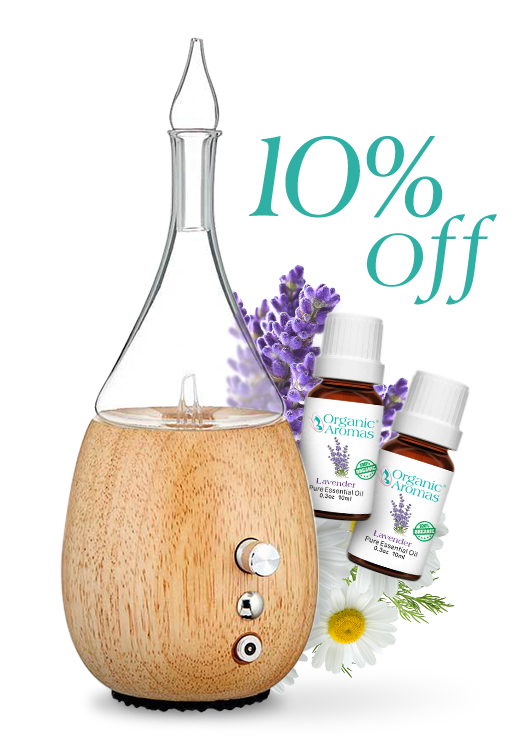
Join Now and Get a Coupon for 10% Off!
Cleaning and Maintenance Routines to Prevent Blockage and Performance Issues
Have you experienced the crisp, vivid aroma that fills your space when your Organic Aromas nebulizing diffuser is clean and functioning perfectly? That clarity doesn’t last forever—not without care. Skip maintenance for too long, and oil residue can dry, clog the micro-tubes, or even damage the delicate internal components. The result? Uneven mist, muted scent, or complete shutdown—and a compromise in overall diffuser safety.
The solution is simple: a quick weekly cleaning ritual that takes just a few minutes—and keeps your diffuser misting like new.
Here’s how to clean your nebulizing diffuser properly:
- Remove the glass reservoir from the base of the diffuser.
- Use the plastic cleaning pipette to add a few milliliters of high percentage isopropyl alcohol (75-95% purity) to the glass reservoir.
- Use your thumb to cover the top of the reservoir and swirl the alcohol really well even giving it a few good shakes.
- Discard the alcohol safely in the waste paper bin
- Add a few more milliliters of alcohol to the glass reservoir.
- Use the cleaning pipette to blast the micro-tubes with a a bit of force to clear away any oil residue or build-up. Do this 5 – 6 times.
- Discard the excess alcohol safely and wipe the outside of the glass clean.
- When the diffuser is dry the cleaning is done.
Here’s a full video demo – pay special attention to the method at the 1:00 mark:
How to Clean Your Organic Aromas Nebulizing Diffuser
After this, test your diffuser again. If your nebulizing diffuser is still not working, continue to the next step.
If you’ve used thick essential oils (such as myrrh, vetiver, or sandalwood), it’s especially important to clean your diffuser promptly after use to avoid hardening inside the micro-tube.
Weekly cleaning prevents residue buildup and ensures your diffuser continues to deliver the purest aromatherapy experience. With regular care, you’ll protect both your investment and the therapeutic power of every drop of essential oil.
Selecting and Placing Diffusers for Safety and Convenience
Choosing a sturdy diffuser feels like picking a trusted friend. Our Organic Aromas Raindrop® and Radiance® ultrasonic (high-frequency vibrations that turn water and oil into a fine mist) diffusers come in glass or BPA-free plastic. This means a steady ribbon of mist, reliable gear, and enhanced diffuser safety for everyday use. Doesn’t a gentle mist ripple through your room and soothe your senses?
Have you checked our nebulizing (fine mist delivers undiluted essential oils) diffuser safety tips? It guides you through CE certified parts and UL listed components. And don’t skip the auto shutoff (safety switch that stops mist when water is low). It’s a simple feature that protects your diffuser from overheating or running dry.
Next, pick a spot that feels right. Place your diffuser on a flat coaster or tray so spills stay contained and your tabletop stays safe. Avoid edges where it might tip over, drafts that scatter mist unevenly, and heat sources that stress the electronics. These small steps help you enjoy every mist session without worry.
Keep curious hands and paws safe by raising the unit above floor level. A shelf or countertop out of reach stops little ones and pets from knocking it over or sniffing oils too closely. Breathe easy.
Finally, match your diffuser’s size to the room. A small bedroom calls for a compact unit like the Mobile-Mini 2.0. A big living space might need a larger model or a longer run time. That way you get the right ripple of aroma without overpowering the air or straining your diffuser.
Reducing Health Risks for Children, Pets, and Sensitive Individuals
Have you thought about diffuser safety when using essential oils around your little ones and fur babies? Essential oils bring a soothing aroma, but some can trigger sneezes, coughs, or worse.
Oils like eucalyptus, tea tree, and peppermint can be toxic to pets and young children. For pet-safe aromatherapy, let your Organic Aromas Mobile-Mini 2.0 sit high on a shelf or in a locked cabinet. Curious paws and tiny hands stay out of harm’s way. Check out essential oil safety for animals for more tips.
Pregnancy needs extra care. Try gentle blends like lavender or chamomile. Then follow these simple steps:
- Add 20-25 drops of oil to a nebulizing diffuser.
- Diffuse (releasing oil into the air as mist) for 15–20 minutes.
- Keep the scent soft, not overwhelming.
Seniors often have more sensitive lungs. To keep things gentle:
- Add 20-25 drops of oil to a nebulizing diffuser.
- Pick calming oils like chamomile or frankincense.
- If anyone coughs or sneezes, pause the diffuser and open a window.
Always watch for signs of sensitivity, coughing, itchy eyes, or red skin. If irritation happens, power down, let the mist settle, and take a few deep breaths. Breathe. Relax. Everyone deserves to truly breathe easy.
Safety First: Handling Oil Spills, Power, and Unexpected Interruptions
Regular maintenance is essential for diffuser safety and optimal performance.
Essential oils are powerful—and that means they must be handled with care. If a spill occurs during use or refill, quick action helps protect both your skin and your surfaces.
Prioritizing diffuser safety helps you select the best unit for your needs.
If you spill essential oil:
- Immediately blot the area using a soft, absorbent cloth or paper towel.
- Clean the surface with a mild soap solution to remove any lingering residue that could stain or irritate.
- Wash your hands thoroughly to prevent potential skin reactions such as redness or itching. Do not touch your eyes or face until hands are fully clean.

Electrical and Mechanical Safety Checks:
While nebulizing diffusers are simple to operate, their power base contains sensitive components. Here are a few quick safety practices to follow:
- Inspect the power adapter and cable weekly for any cracks, heat damage, or exposed wires.
- Always plug your diffuser into a surge protector to prevent damage from voltage fluctuations.
- Avoid over-tightening the glass reservoir, as it may crack under pressure.
- Before each use, make sure the unit is on a flat, stable surface to prevent tipping, especially when filled with oil.
Always keep diffuser safety in mind with your essential oil choices during pregnancy.
If your diffuser stops misting suddenly:
- Check that the glass nozzle is clean and not clogged. Use the cleaning method with 95% alcohol if needed.
- Try unplugging the unit, waiting 10 seconds, and plugging it back in to reset the air pump.
- If airflow is weak or absent, perform the Pump Test and consult the manufacturer with video evidence for troubleshooting.
Watch this quick tutorial here:
How to Use the Organic Aromas “Pump Test Device”
This test is essential if you believe your nebulizing diffuser not working due to a motor or internal malfunction.
Use only manufacturer-approved replacement parts, especially for hand-blown glass components. Using off-brand parts may cause fit issues or operational failure—and may void your warranty.
With proper care and quick response to any spills or interruptions, your nebulizing diffuser will remain safe, functional, and a reliable source of aromatic wellness.
Diffuser Safety Final Words
A Gentle Reminder on Safe and Mindful Use
Through mindful diffuser use and attention to diffuser safety, you’ve learned how to add just the right amount of pure essential oil directly into the glass reservoir—no water needed.
You’ve chosen high-quality, undiluted oils, avoided thick or resinous types, and kept your diffuser running smoothly with simple weekly alcohol cleaning.
You found the ideal location for optimal mist flow, matched your diffuser’s coverage to your room size, and kept little hands (or paws) safely away from fragile glass—all part of mindful diffuser safety.
You handled spills with care, checked your power cords, and followed best practices for cleaning and maintenance to ensure continued diffuser safety and performance.
All these small, thoughtful actions add up to one thing: uninterrupted calm. Here’s to many more peaceful moments ahead—powered by pure essential oils and safe, confident diffuser safety practices.
FAQ
How many drops of oil should I use in a nebulizing diffuser?
For optimal performance, add 20–25 drops of pure, undiluted essential oil directly into the glass reservoir. Nebulizing diffusers do not use water, allowing for a more potent aromatic experience.
How do I clean a nebulizing diffuser properly?
Use high-purity isopropyl alcohol (75–95%) once a week. Add a few milliliters into the glass reservoir, swirl it well, and blast the micro-tubes using the cleaning pipette. Repeat the process a few times and allow the diffuser to dry completely before reuse.
What kind of essential oils are safe to use in a nebulizing diffuser?
Only use 100% pure, undiluted essential oils without carrier oils, synthetic additives, or fragrances. Avoid thick, resinous oils such as myrrh, vetiver, or sandalwood, which can clog the diffuser’s glass micro-tubes.
Where should I place my nebulizing diffuser for best results?
Place your diffuser on a flat, stable surface away from heat, direct airflow, or edges where it could be tipped over. Keep it out of reach of children and pets to prevent accidents.
How do I know if my nebulizing diffuser has a motor issue?
If your diffuser stops misting and the glass nozzle is clear, perform the “Pump Test” by checking airflow from the nozzle port. If there’s no airflow, the internal motor may be faulty. Contact the manufacturer with video evidence for further support.


